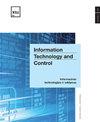基于深度神经网络迁移学习技术的乳腺癌预后研究
IF 2
4区 计算机科学
Q3 AUTOMATION & CONTROL SYSTEMS
引用次数: 0
摘要
乳腺癌是发达国家和不发达国家妇女死亡的一个主要原因。乳腺癌的早期发现和诊断对于患者接受适当治疗和增加生存机会至关重要。为了提高乳腺癌的自动检测和诊断水平,提出了一种新的深度学习模型“基于乳腺癌预后的迁移学习(breast cancer Prognosis Based Transfer learning, BCP-TL)”。该模型使用迁移学习,将从解决一个问题中获得的知识应用于另一个相关问题。该模型基于预训练的卷积神经网络(CNN),该网络从乳房x光图像分析学会(MIAS)数据集中提取特征。在这个模型中使用了四种不同的CNN架构:AlexNet、Xception、ResNeXt和Channel boosting CNN。采用精确性、敏感性、特异性、精密度、f1评分和ROC曲线下面积(AUC)等6个指标评价模型的性能。Xception和Channel boosting CNN的结合表现出了优异的性能。通过结合多次迭代的本质特征,Channel boosting CNN在乳腺癌诊断中可以达到更高的准确率,总体准确率达到98.96%。这突出了BCP-TL模型在有效检测和诊断乳腺癌方面的潜力。本文章由计算机程序翻译,如有差异,请以英文原文为准。
Breast Cancer Prognosis Based on Transfer Learning Techniques in Deep Neural Networks
Breast cancer is a major cause of death among women in both developed and underdeveloped countries. Early detection and diagnosis of breast cancer are crucial for patients to receive proper treatment and increase their chances of survival. To improve the automatic detection and diagnosis of breast cancer, a new deep learning model called “Breast Cancer Prognosis Based Transfer Learning (BCP-TL)” has been developed. This model uses transfer learning, which applies the knowledge gained from solving one problem to another relevant problem. The model is based on a pre-trained convolutional neural network (CNN) that extracts features from the mammographic image analysis society (MIAS) dataset. Four different CNN architectures were used in thismodel: AlexNet, Xception, ResNeXt, and Channel Boosted CNN. The performance of the model was evaluated using six metrics, including accuracy, sensitivity, specificity, precision, F1-score, and the area under the ROC curve (AUC). The combination of Xception and Channel Boosted CNN showed excellent performance. By combining essential features from multiple iterations, the Channel Boosted CNN can achieve higher accuracy in breast cancer diagnosis, with an overall accuracy of 98.96%. This highlights the potential of the BCP-TL model in effectively detecting and diagnosing breast cancer.
求助全文
通过发布文献求助,成功后即可免费获取论文全文。
去求助
来源期刊

Information Technology and Control
工程技术-计算机:人工智能
CiteScore
2.70
自引率
9.10%
发文量
36
审稿时长
12 months
期刊介绍:
Periodical journal covers a wide field of computer science and control systems related problems including:
-Software and hardware engineering;
-Management systems engineering;
-Information systems and databases;
-Embedded systems;
-Physical systems modelling and application;
-Computer networks and cloud computing;
-Data visualization;
-Human-computer interface;
-Computer graphics, visual analytics, and multimedia systems.
 求助内容:
求助内容: 应助结果提醒方式:
应助结果提醒方式:


